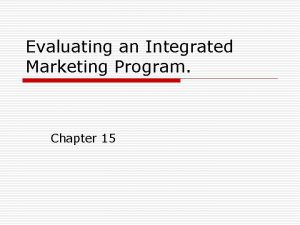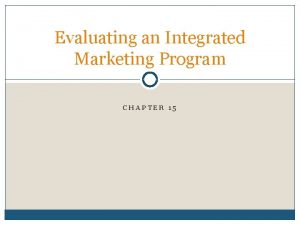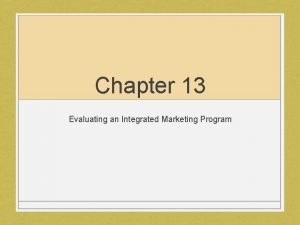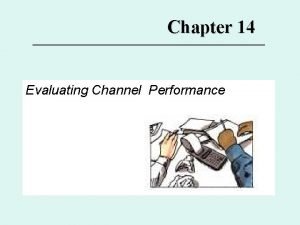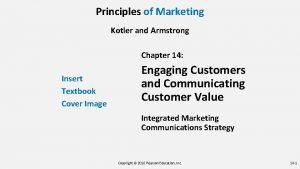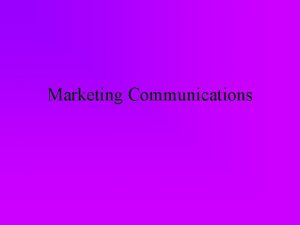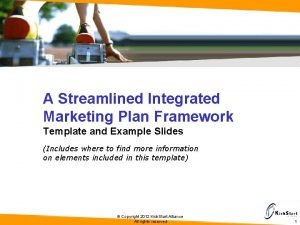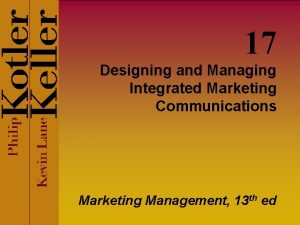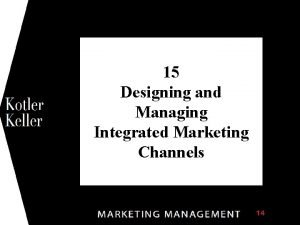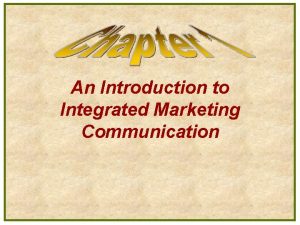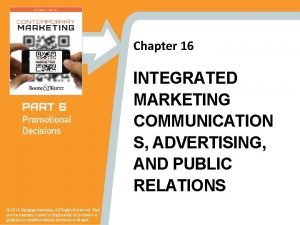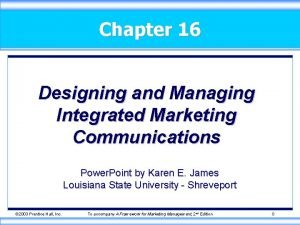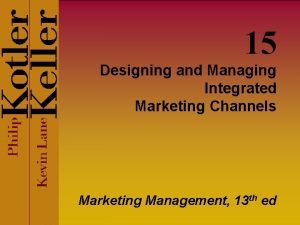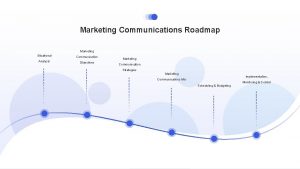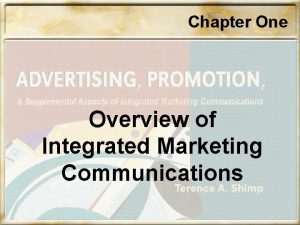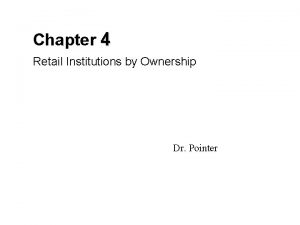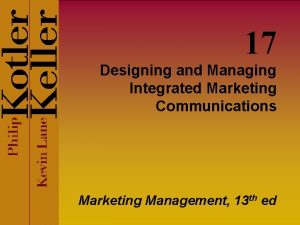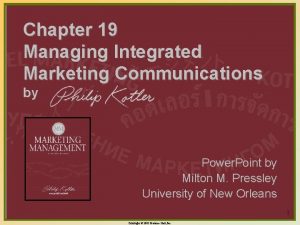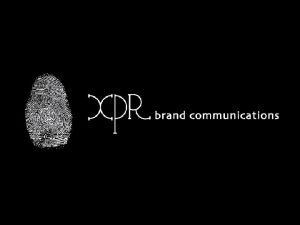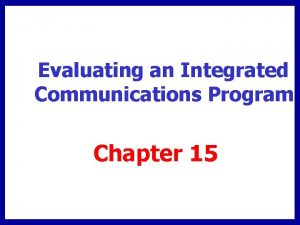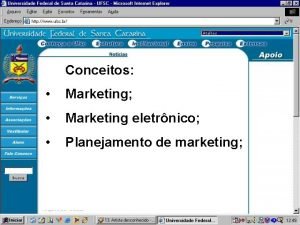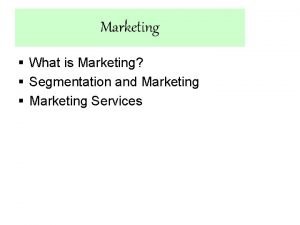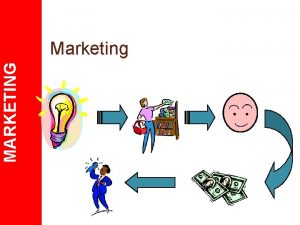Evaluating an Integrated Marketing Program Chapter 15 What






















- Slides: 22

Evaluating an Integrated Marketing Program. Chapter 15

What should be evaluated? o Short-term outcomes (sales, redemption rates) o Long-term results (brand awareness, brand loyalty) o Product specific awareness (new product or extension, company) o Awareness of the overall company o Affective responses (liking the company, and positive brand image)

Evaluation o Pretest measures o Concurrent measures o Post test measures

FIGURE 1 5. 1 + two Message Evaluation Techniques o o o o o Concept testing Copytesting Readability tests Recall tests Recognition tests Inquiry Tests Attitude and opinion tests Emotional reaction tests Physiological arousal tests Persuasion analysis

Concept Testing o Aimed at content of a marketing piece. o What is evaluated? n n n Verbal messages Message and meaning Translations for international copy Product placement in ads Value of a sales promotional efforts o Focus groups may be used o Concept testing instruments: n Comprehension and readability tests n Reaction tests

Copytesting o Used when marketing piece is finished or in final stages o Portfolio test – print communication o Theater test – television/mass media communication o Methods used: n Focus groups n Mall intercept

Copytesting can be used to determine if viewers comprehend this ad and what their reaction to it is.

Copytesting o Criticisms of copytesting n Some agencies do not use them n Can stifle creativity n Focus groups may not be a good judge o Support of copytesting n Issue of accountability http: //www. youtube. com/watch? v=6 a. XN 8 qax. P ek n Majority support copytesting because clients want support for ad decision

FIGURE 15. 6 Copytesting principles of Positioning Advertising Copytesting (PACT) o o o o o Testing procedure should be relevant to objectives. Researchers should agree on how the results will be used in advance. Multiple measures should be used. The test should be based on some model or theory of human response to communication. Testing procedure should allow for more than one exposure. In selecting alternate ads to include in the test, they should be at the same stage in the process as the test ad The test should provide controls to avoid biases. Sample used for the test should be representative of the target sample. Testing procedure should demonstrate reliability and validity. Source: Based on PACT document published in the Journal of Marketing, (1982) , Vol. 11, No. 4, pp. 4 -29.

FIGURE 15. 3 Recall Tests - Items tested o o o o o Product name or brand Firm name Company location Theme music Spokesperson Tagline Incentive being offered Product attributes Primary selling point of communication piece

Recall Tests o Day-after recall (DAR) o Unaided recall o Aided recall Factors affecting recall: o Respondent’s age affects recall scores – Table 15. 1, p. 416. o Medium used also plays a factor

Sample Recall Test 30 -Second TV Advertisement for Pet Food

Recall Decay Magazine Ad vs. Television Ad Source: Magazines Canada’s Research Archive

Recognition Tests o Respondents shown marketing piece and are asked if they recognize it (if they have seen it before, when, how many times, etc. ). o Good for measuring reaction, comprehension and likability. o Often used with recall tests, but different then recall tests

Inquiry Tests o When an advertiser runs a certain amount of ads and offers some inducement to reply to them in order to check media, individual ad, the offering, or general campaign.

Emotional Reaction Tests o Used for material designed to solicit emotions. o Difficult to measure emotions with questions. o Warmth Monitor o Physiological arousal tests n Psychogalvanometer n Pupillometric test

Sample Graph from a Warmth Meter 30 -Second TV Advertisement Ad section that elicited negative emotions

FIGURE 15. 7 Behavioral Measures o Sales o Redemption rates o Response rates to offers o Test markets o Purchase Simulation tests

FIGURE 15. 9 Responses to Marketing Messages that can be Tracked o o o Changes in sales Telephone inquiries. Response cards. Internet inquiries. Direct marketing responses. Redemption rate of sales promotion offers. n Coupons, premiums, contests, sweepstakes

Test Markets o Used to assess: n Advertisements (different versions in different markets) n Consumer and trade promotions n Pricing tactics n New products o Cost effective method of evaluation prior to large-scale launch. o Resembles actual situation. o Design test market to model full marketing plan. o Length of test market is a concern. o Competitive actions must be considered

Evaluating Public Relations Number of clippings Number of exposures/impressions Advertising equivalence Comparison to PR objectives – good v. bad, i. e. , Toyota o Changes in awareness, comprehension, or attitude (organization, products, employees, etc. ) o o

Difficulties in Evaluating Advertising o Influence of other factors on behavior o Delayed impact of advertising o Consumers change their mind in the store o Whether brand is in evoked set o Goal of ad may be to build brand equity, not increase sales
 Evaluating an integrated marketing program
Evaluating an integrated marketing program Evaluating an integrated marketing program
Evaluating an integrated marketing program Evaluating an integrated marketing program
Evaluating an integrated marketing program Evaluating an integrated marketing program
Evaluating an integrated marketing program Are criteria for evaluating performance of channel members
Are criteria for evaluating performance of channel members Principles of marketing chapter 14
Principles of marketing chapter 14 What is encoding in marketing communication
What is encoding in marketing communication Alokesh banerjee
Alokesh banerjee Integrated marketing plan template
Integrated marketing plan template Designing and managing integrated marketing communication
Designing and managing integrated marketing communication Integrated marketing channel system
Integrated marketing channel system Introduction to integrated marketing communication
Introduction to integrated marketing communication Coca cola imc
Coca cola imc The sender of an integrated marketing communication
The sender of an integrated marketing communication Designing and managing integrated marketing communications
Designing and managing integrated marketing communications Designing and managing integrated marketing channels
Designing and managing integrated marketing channels Objectives of marketing communication
Objectives of marketing communication Overview of integrated marketing communications
Overview of integrated marketing communications Fully integrated vertical marketing system
Fully integrated vertical marketing system Designing and managing integrated marketing communications
Designing and managing integrated marketing communications 360 integrated marketing
360 integrated marketing Retail institution
Retail institution Designing and managing integrated marketing channels
Designing and managing integrated marketing channels

